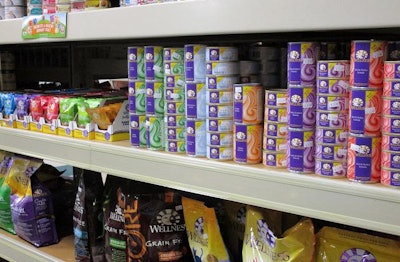
Pet food packages in the US are getting smaller, according to data released by GfK in fall 2016 (https://goo.gl/1c8AFE). The trend especially manifests in wet pet food. Sales of products in traditional cans or tins, while still predominating, declined in the US pet specialty channel – from 87 percent in 2011 to 83 percent last year for dog food and 96 to 92 percent for cat food, Maria Lange of GfK reported – as tray and pouch product sales grew from 2015 to 2016 alone by double-digits, except for dog food trays (and they increased 9 percent).
In 2015, a report on the US pet food packaging market by Food Safety Magazine forecasted pouches to rise 8.3 percent per year through 2018, compared to only 2.7 percent for cans. So the trend is not limited to pet specialty.
Nor is it exclusive to wet pet food. Pet treat packages smaller than 16 ounces have experienced continued growth since 2012 in both sales and units in US pet specialty, Lange said, while larger treat packages have noticeably declined. With dry dog food, shares of small and medium bags have slowly risen since 2011, from 8.5 percent of poundage volume to 9.3 percent in 2016 and 12.2 to 14.6 percent, respectively. At the same time, large bags nearly doubled, from 13.2 to 25.8 percent, but extra-large bags declined, from 66.1 to 50.3 percent.
With dry cat food, small bags grew from 14.6 percent in 2011 to 19.3 percent in 2016, while medium and large bags declined, from 28.1 to 27.9 percent and 49.9 to 28.7 percent, respectively.
The increasing popularity of small and toy dog breeds is a key factor behind this trend. And, despite dog food’s dominance, manufacturers have been launching more new cat food products, with many packaged in convenient, single-serving trays and pouches. This is perhaps at least partially due to a reported gravitation among millennials – now the largest demographic of pet owners – toward cat ownership.
Another reason is the growing popularity of alternative pet food formats, such as freeze-dried, dehydrated, frozen and mixers/toppers. These products are typically denser and can fit in smaller containers and packages, Lange said. Though still small categories, they are the fastest risers, with double-digit growth rates year over year.

















